#Republic XF-103
Explore tagged Tumblr posts
Text

21 August 1957. The USAF formally cancelled the XF-103 Mach 3 interceptor program. A powerful missile-armed interceptor aircraft capable of destroying Soviet bombers while flying at speeds as high as Mach 3.
@ron_eisele via X
16 notes
·
View notes
Text
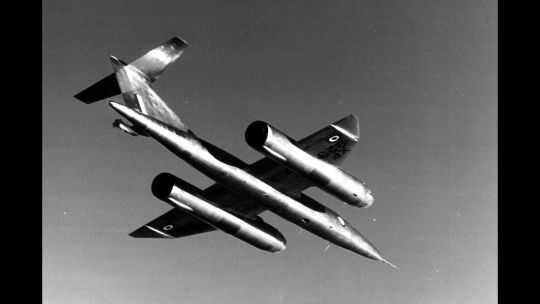
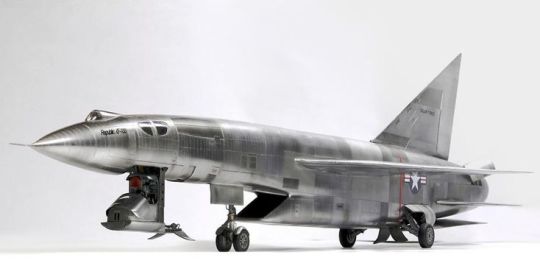
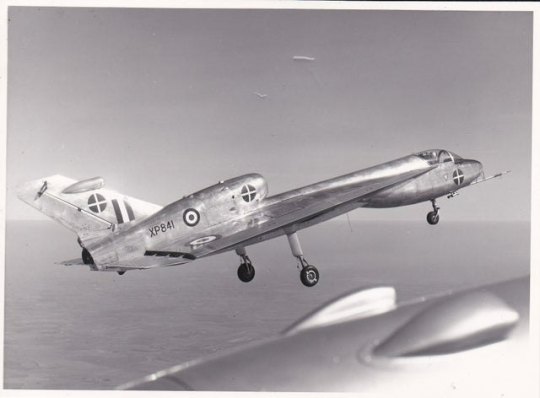



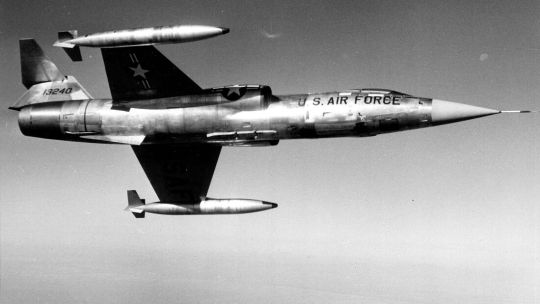
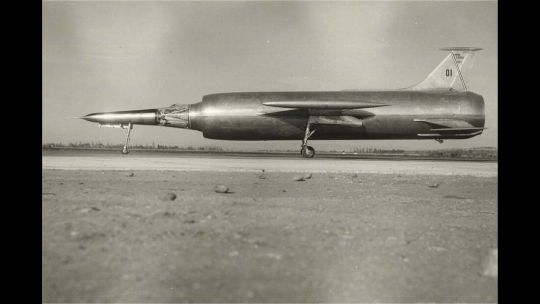


jet age jets
Bristol T.188
Republic XF-103
Handley Page HP.115
MiG 21
Saab 35
Lockheed F-104
Leduc 022
Corvair B-58
Mjasishchev M-50
cred: flugrevue.de, planehistoria.com, mediastore.com, facebook.com, commons.wikimedia.crg, saab.com, flugrevue.de, flugrevue.de, wikipedia.org, oldmachinepress.com,
#jet#jet age#aviation#bristol#republic#handley page#mig#saab#lockheed#leduc#draken#starfighter#corvair#hustler#streamline#supersonic#cold war#mjasishchev
15 notes
·
View notes
Text
True, and it's perfect for April Fools.
That said, this concept was obviously inspired by the (sort-of) real Republic F-103 from the 50s.



"The US Navy's Vought Regulus II missile was such a sound design that the USAF wanted a fighter derived from it... At least that's the idea behind the Vought YF-103A Cutlass II, which is based on the Regulus II with a Vought Crusader's cockpit grafted onto it..."
By Bispro: link
109 notes
·
View notes
Text
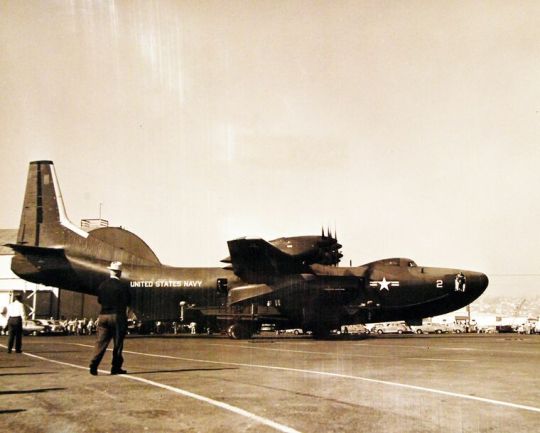
- A Convair R3Y Tradewind transport sits on a cradle prior to being moved into San Diego Bay, 4 November 1954. | Photo: US Navy
FLIGHTLINE: 126 - CONVAIR R3Y TRADEWIND
The Tradewind was first ordered as a post-WWII patrol bomber, but was then changed to a transport before being canceled entirely.
After the end of WWII, the US Navy requested a new long range patrol bomber that would take advantage of the technologies developed during the war, including laminar flow wings and turboprop engines. Convair responded with the Model 117, a flying boat with a high wing, powered by Allison engines driving six-bladed contra-rotating props. Two prototypes of the plane, designated XP5Y-1 were ordered on 27 May 1946, with the first flight occurring on 18 April 1950.

-Orthograph of the P5Y-1 Tradewind. | Illustration: US Navy

-The Convair XP5Y-1 Tradewind on the day of its first flight on 18 April 1950. | Photo: US Navy
The P5Y were designed to carry 8,000lbs of weapons, and were armed with five pairs of 20mm cannon for self-defense. The T40 engine, which was essentially two T38 engines driving contra-rotating props via a common shaft, provided copious power, granting the plane with a maximum speed of 350mph and a climb rate of nearly 2,000 feet-per-minute, roughly that of a P-61 Black Widow. The design of the T40 also allowed for one of the power sections to be shut down for cruising, giving the plane a a range of 2,500 miles. In August of 1950, one of the YP5 prototypes set an endurance mark for turboprop aircraft of eight hours six minutes. A non-fatal accident destroyed one of the prototypes on 15 July 1953.

-Orthographs of the R3Y-1 and -2 models. | Illustration: US Navy
The rapid progress of technology post-war saw the Navy's interest in the Tradewind change, and Convair was ordered to modify the design into a transport. The changes included removing the defensive cannons, deleting the dihedral from the horizontal stabilizers, changes to the engine nacelles to fit upgraded T40-A-10 engines, the addition of soundproofing, air conditioning, and pressurization equipment for the cargo compartment, and a 10 foot hatch on the port side to load and unload cargo. The R3Y-1 could accommodate 103 passengers or twenty-four tons of cargo. First flight of the -1 variant was on 25 February 1954, with 5 total examples completed. Also in 1954, R3Y-1 "Coral Sea", using a strong jet stream, set a transcontinental speed record for seaplanes at 403mph.

-The 4 November 1954 public unveiling of the R3Y-1 Tradewind at Convair's plant in San Diego. | Photo: San Diego Air & Space Museum

-An RY3-1 on specialized beaching gear. | Photo: US Navy
The last six Tradewinds were R3Y-2 models, with the nose and crew compartment changed to include a swing-up nose which allowed for drive-on/drive-off cargo like jeeps and light armored vehicles. The Navy intended for these aircraft to be flying LSTs, with the aircraft directly unloading onto beachheads. In practice however, the aircraft, loaded or unloaded, were unable to hold steady and beach, and eventually all the Tradewinds were modified to act as aerial refueling tankers.

-A tractor being loaded onto an R3Y-2. | Photo: US Navy

-A R3Y-2 Tradewind set a record by simultaneously refueling four Grumman F9F-8 Cougar fighters in September 1956. | Photo: US Navy
The Tradewind had a short service life, with US Navy Transport Squadron 2 (VR-2) standing up with the plane on 31 March 1956, and the unit being disbanded and the type being grounded on 16 April 1958. Reliability problems with the T40 engine (which doomed the other aircraft that used the type, such as the Convair XFY and Lockheed XFV VTOL fighters, the Douglas A2D Skyshark and the Republic XF-84H Thunderscreech) as well as several incidents related to the props disintegrating mid-flight, as well as improvements in jet engines, ICBMs and changing strategies saw the end of seaplanes and flying boats.

-Four Tradewinds, two R3Y-1s and two -2s, flying over Alcatraz in 1957. | Photo: US Navy
#aircraft#aviation#avgeek#cold war#airplanes#airplane#cold war history#coldwar#aviation history#us navy#convair#convair r3y#r3y tradewind#tradewind#r3y-1#r3y 1#r3y 2#flying boat#seaplane#Transport plane
49 notes
·
View notes
Photo

What Might Have Been: Conceptual view of two operational USAF/Republic F-103As from the 94th FIS. It was the early 1950s in the midst of the Cold War and, based on intelligence at the time, the USAF rationale was to development extreme high-speed interceptors. Arming/fusing data on Soviet Union nuclear bombs was limited and, a bomber hit by an air-to-air missile could initiate a nuclear detonation. Thus, the priority was an early interception point to keep incoming Soviet bombers as far away from friendly territory as possible. In response several U.S. contractors pursued development of high-Mach interceptor aircraft. An operational F-103A would have had a dual-cycle turbo-ramjet engine and be capable of Mach 4 at 75,000 ft. –The initial takeoff and cruise to intercept would be handled by an air-breathing Wright turbojet – for the high-speed approach to final intercept the ramjet would kick in – for the return to base the turbojet would be restarted. The Air Force determined that the propulsion technology was not mature enough and, the XF-103 only reached full-scale mockup stage. Erik Simonsen Illustration
0 notes
Text

Republic XF-103 was an American project to develop a powerful missile-armed interceptor aircraft capable of destroying Soviet bombers while flying at speeds as high as Mach 3. Despite a prolonged development, it never progressed past the mockup stage.
@CcibChris via X
4 notes
·
View notes
Text
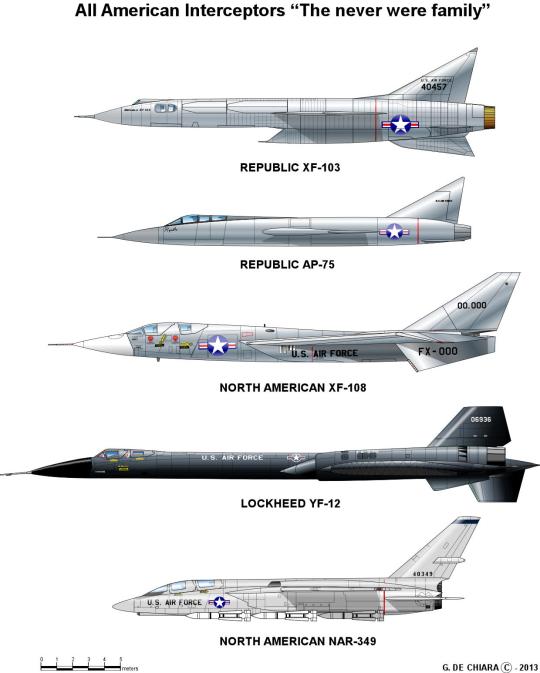
source
#Republic XF-103#F-103#Republic AP-75#North American XF-108 Rapier#F-108#Lockheed YF-12#F-12#North American NAR-349 Retaliator#fighter#Interceptor#what if#usaf#my post
48 notes
·
View notes
Text

"Conceived as a high altitude, high speed (Mach 3+) interceptor, Republic Aviation’s proposal for the XF-103 was, in a word, 'ambitious.' Stainless steel and titanium alloys were to dominate the construction process, with power being supplied by a unique turbo-ramjet engine design. A large, single 'sugar scoop' intake would provide adequate airflow to the engine, with the pilot having straight-forward visibility only through a periscope arrangement designed by Bausch & Lomb atop the forward fuselage. Radical delta flying surfaces were employed throughout, with all armament (radar-guided missiles) being carried internally. The aircraft made it past the mockup stage; the pilot’s periscope was tested successfully through over 200 takeoffs and landings in a specially modified F-84E Thunderjet. Some components for the prototype were already finished when the entire project was cancelled for budgetary reasons. The painting depicts what the prototype may have looked like in the flight pattern above the site of Republic’s Farmingdale, New York plant at Mitchel Field, with a pair of RF-84Ks taxiing out for takeoff.
Oil on canvas, created 1998 for Collect-Aire Models as a 'box art' illustration for their 1/48 limited run cast resin kit."
source
#Republic XF-103#XF-103#fighter#interceptor#cancelled#United States Air Force#U.S. Air Force#US Air Force#USAF#concept art#artwork#my post
23 notes
·
View notes
Text

Republic XF-103 interceptor and power plant operation diagram.
source
#Republic XF-103#XF-103#fighter#ramjet#United States Air Force#U.S. Air Force#US Air Force#USAF#my post
21 notes
·
View notes
Text

Cutaway of the Republic XF-103 Thunderwarrior.
source
#Republic XF-103#XF-103#F-103#cutaway#Republic XF-103 Thunderwarrior#fighter#United States Air Force#U.S. Air Force#US Air Force#USAF#my post
42 notes
·
View notes
Text

Concept art of Republic XF-103.
source
#Republic XF-103#XF-103#Fighter#concept art#usaf#cancelled#United States Air Force#U.S. Air Force#US Air Force#USAF#my post
19 notes
·
View notes
Text

Republic XF-103
Republic XF-103 mock-up. (U.S. Air Force photo)
6 notes
·
View notes
Text

Republic XF-103
The Republic XF-103 was an American project to develop a high speed interceptor aircraft capable of destroying Soviet bombers. Despite a prolonged development, it never progressed past the mock-up stage.
In 1949, the USAF issued a request for an advanced supersonic interceptor to equip the Air Defense Command. Known formally as Weapon System WS-201A, but better known informally as the "1954 interceptor", it called for a supersonic aircraft with all-weather capability, intercept radar and air-to-air missile armament. Republic was one of six companies to submit proposals. On 2 July 1951, three of the designs were selected for further development, Convair's scaled-up XF-92 that evolved into the F-102, a Lockheed design that led to the F-104, and Republic's AP-57. AP-57 was an advanced concept to be built almost entirely of titanium and capable of Mach 3 at altitudes of at least 60,000 ft (24,400 m).
A full-scale mock-up of the AP-57 was built and inspected in March 1953. A contract for three prototypes followed in June 1954. Work on the prototypes was delayed by continued problems with the titanium construction, and more notably by continued problems with the proposed Wright J67 engine. The contract was later reduced to a single prototype. In the end, the J67 never entered production and the aircraft it had been chosen for were forced to turn to other engine designs, or were cancelled outright. Republic suggested replacing the J67 with the Wright J65, a much less powerful engine. The project was eventually cancelled on 21 August 1957 with no flying prototypes ever being completed.
The design was given a brief reprieve as part of the Long-Range Interceptor - Experimental (LRI-X) project that led to the North American XF-108 Rapier. Part of this project was the development of the advanced Hughes AN/ASG-18 pulse-doppler radar and the GAR-9 missile. Republic proposed adapting the F-103 as a testbed for these systems, although it wouldn't be able to come close to meeting the range requirements of LRI-X. Some work was carried out adapting the mockup to house the 40 inch antenna, which required the nose section to be scaled up considerably. Nothing ever came of the proposal, and testing of the ASG-18/GAR-9 was carried out on a modified Convair B-58 Hustler instead.
6 notes
·
View notes
